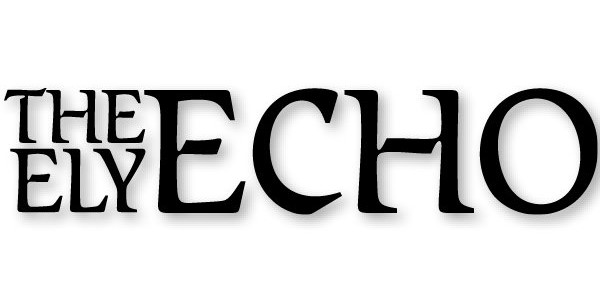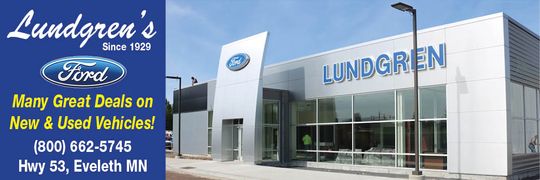The Babbitt city council received an update on the New Range Copper Nickel Project.
Simon Charter, the company’s Community and Social Performance Manager spoke at a lengthy meeting on Aug. 20.
He said the big change for the company is that it is now a joint venture with Teck and Glencore “two giants in the mining industry.”
“Tech brought the Mesaba project here in your backyard to the table and Glencore brought PolyMet,” said Charter. “So we’re now this 50-50 joint venture between Tech and Glencore.”
He said the company has taken a step back to take a new look at the project “to look at how we can strengthen this project, how we’re going to get it across the finish line.”
Charter said the company was full permitted a year ago but after court challenges, several permits were revoked.
“We really want to make sure that what we do going forward is our best foot forward going forward. So we looked pretty hard at the project.
“We looked pretty hard at what came up during the permitting process. We looked pretty hard at what needs to be done to meet our new parent company’s requirements to progress the project.
“We now feel like we’re in a pretty good position to start moving forward again.”
Charter said a lot of work has been done to the former LTV plant.
“There’s been a ton of money spent. We stripped out the old LTV concentrator, 24,000 tons of steel that we pulled out of there for recycling, 65,000 tons of concrete for recycling.
“Thoseofyouwhoknowwhat that building looked like before, it’s now just a big hollow shell.
“And I would invite anyone here who would like to come and see the old building to see what’s been done out there. It’s truly impressive.
“We’ve also taken the old LTV offices and redone them. Our GM says it’s lipstick on a pig. It’s an old building, but it’s looking pretty good in there. We actually have quite a nice work environment now, which we didn’t really have for a while.”
Charter said the workforce has gone from 27 to 60 people in the last year.
“Basically, the message there is, although we did face some challenges, we’re absolutely not backing down. We certainly, we have unbelievable projects here.
“Our parent companies really see a lot of value in producing these projects, and they’re willing to put more resources into both getting the site ready for us to open when we get there, as well as making sure that the team up there is well-adapted, so we’re pretty happy.
“In terms of going forward, we’ve formally come out and said, okay, this is what we’re going to do for the next year. That’s kind of unusual for mining.
“We typically like to tell people what we’re going to do ahead of time in the mining industry, but the reason we’ve done this is we just want to be open and transparent about what we’re doing going forward.
“We want to hear the input as we go along. We want everyone to know what we’re doing, have the ability to comment, you know, let us know if you have any concerns, have any suggestions.”
Charter said the company is undertaking four major studies.
“Probably the biggest one is looking at tailings. That was the thing that was challenged in probably the most general mining process.
The current plan is to use the existing tailings facilities and the existing tailings deposition strategy, which is an upstream tailings dam construction.
That’s where we’ve seen some of the issues around the world in terms of tailings dam failure. So, while we feel that the existing tailings dam design is solid and it was permitted, this is an opportunity to take another look at that.
“Is centerline more feasible for us? Would the downstream be an option? Obviously, footprints would increase significantly with those options.
“Something we’re also going to consider is input tailings disposal. We’ve got a bunch of holes out there. What would it look like depositing tailings in some of those? So, reclamation as we go along.
“Obviously, that comes with permitting challenges and a lot of design implications.
“The next area we’re going to be looking at is the current design has a 32,000-ton per day throughput.
“When that was proposed, that was a pretty good option in terms of concentrated design. Things have progressed a lot in the last few years. 40,000 tons is just a far superior design in terms of efficiency out there, if you look at what’s available in terms of mills and things like that.
“We do think that there could be some emission improvements with some of that new technology. Obviously, there’s a financial benefit to us to processing faster, but there are life of mine implications.
“Obviously, the mine doesn’t get bigger. We don’t have more than we have, so we’d be mining it faster.
“The third is we committed to an RO plant, $100 million RO plant, to get our water emissions down to the wild rice standards. We stand by those commitments. We will not budge on that.
“But, again, technology has advanced in the last few years, and now we have access to both of our current company’s resources, who are doing work all over the world and a lot of water treatment work.
“Maybe we can do even better. Maybe we can do it more efficiently, better cost, or even improve on those standards. So, we’re going to look at that as well.
“And then the last thing we’re going to look at is the current design has us using rail on site to transport ore. The pits are about six miles away from the concentrators. We’ve got rail all over site. We’re going to transport the ore by diesel locomotive.
That’s not a great option when we’re looking at greenhouse emission commitments that both us and our parent companies have.
So, we’d like to look at conveyors, obviously, improvements on emissions, but there’s a footprint-related impact if we’re going to be building conveyors on site.
So, that’s what we’re going to be looking at. We don’t really have any answers now. We don’t have any major concerns with our current project design, but this is a great opportunity to do even better and to strengthen the project.”
Council members said they want to work with the company and would provide letters of support and possibly help with workforce housing.
“Obviously, workforce and housing is always a concern up here. It took me a long time to find a house. It’s tough up here. I think that’s going to be a challenge faced by any organization that’s trying to expand or develop up here,” said Charter.
The NorthMet project is a smaller project. It’s not massive. We all know that Mesaba, the second project, has the potential to be significant down the line, but that we’re still in scoping, so it’s quite a way out.
“We all know what the economic impact of mining can be, and the growth that comes from that. That’s one area we can’t really argue against mining, in terms of that economic positive impact.”










